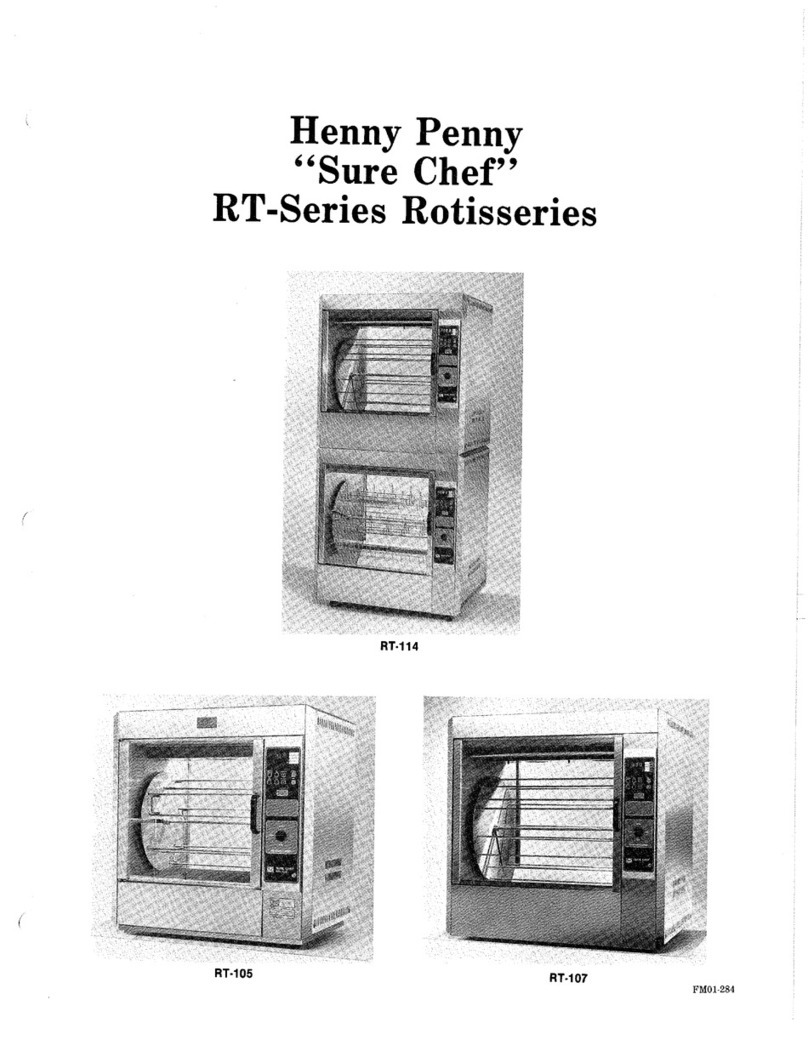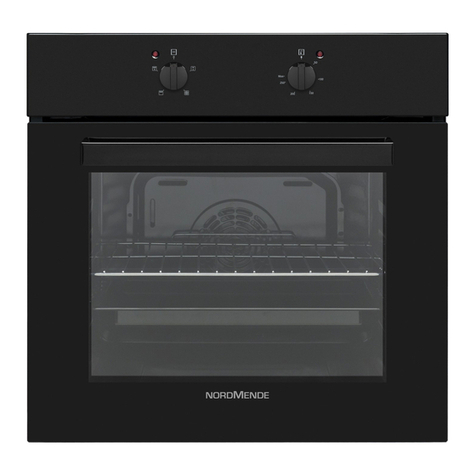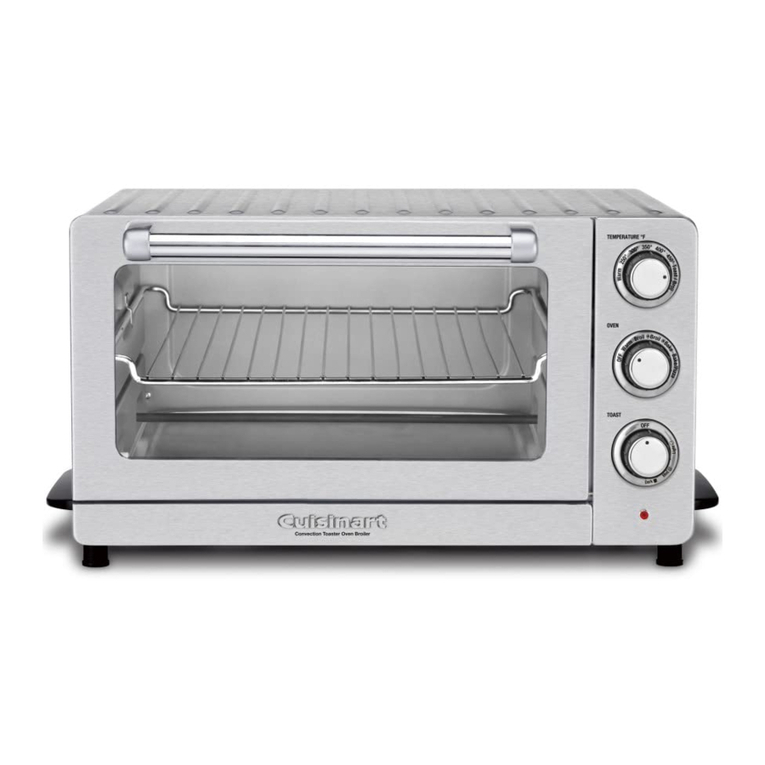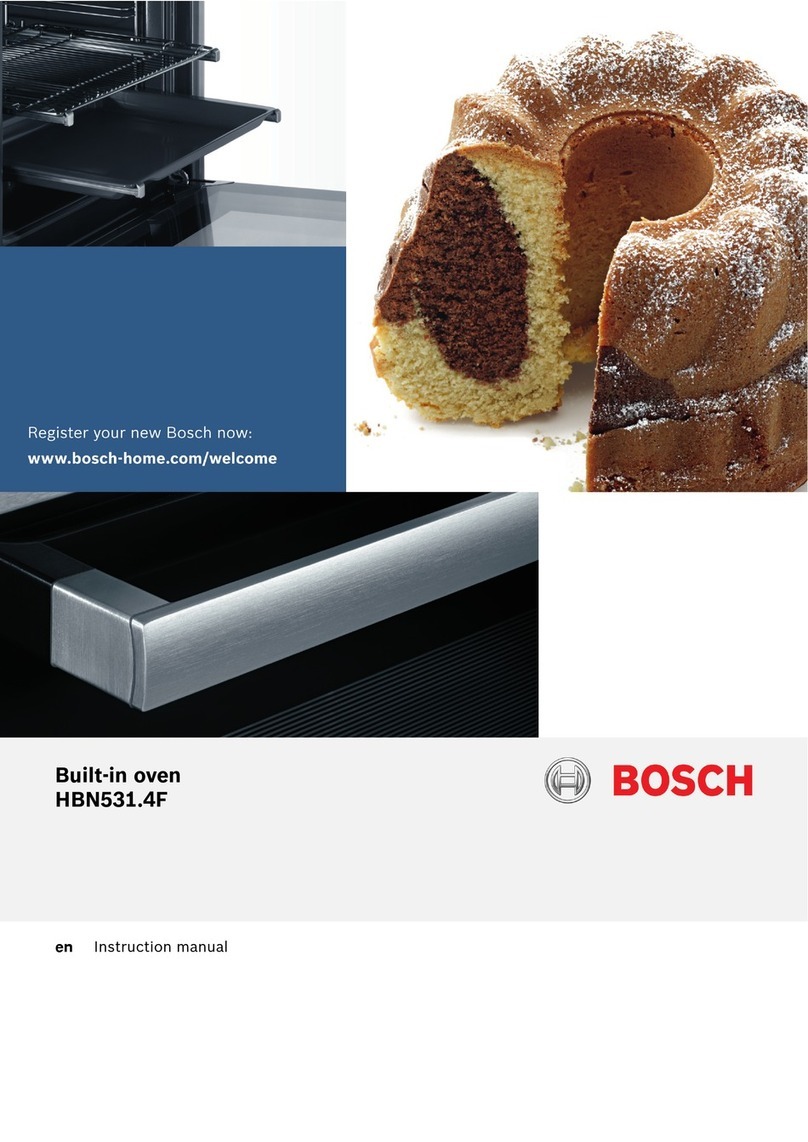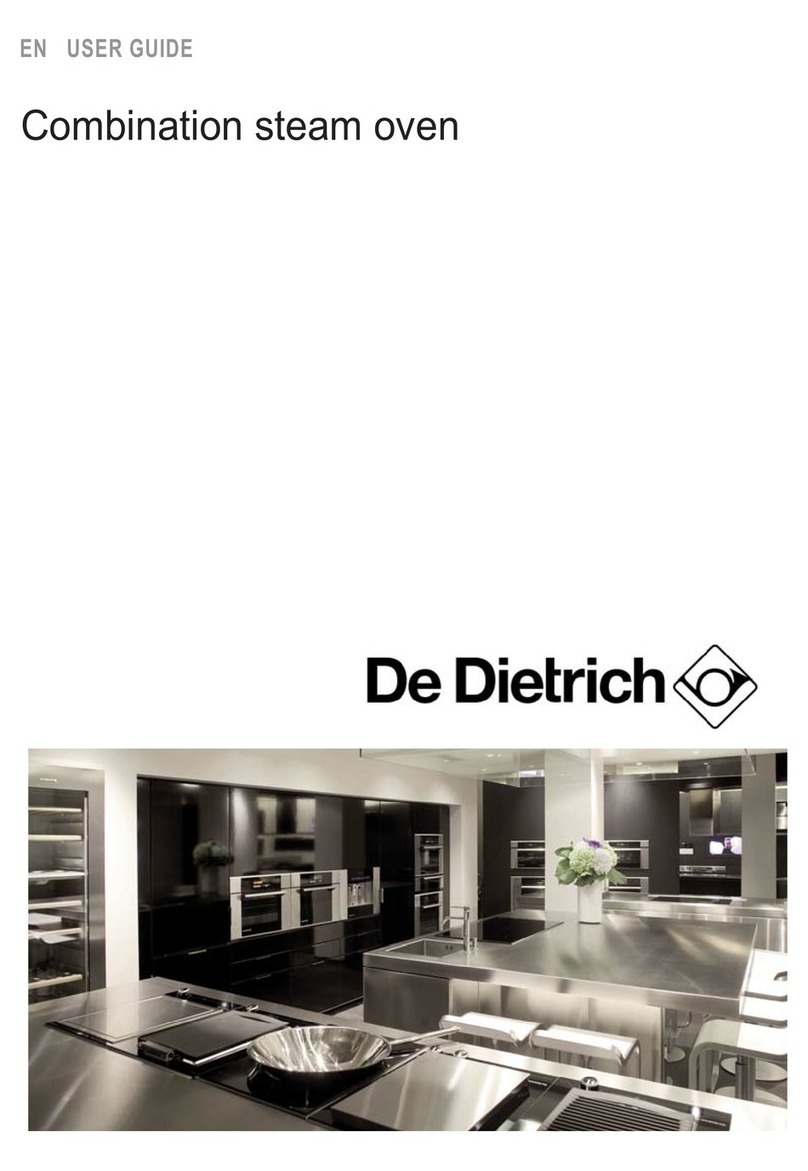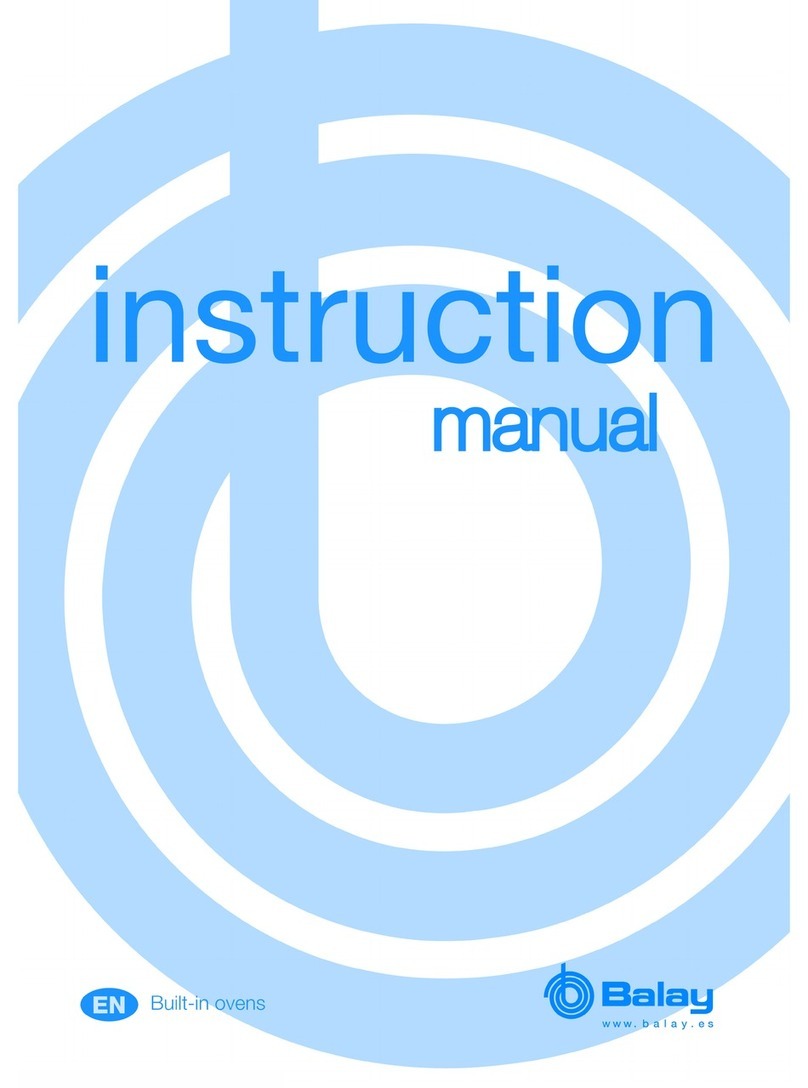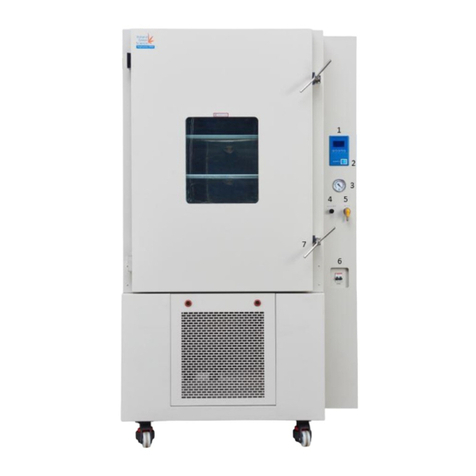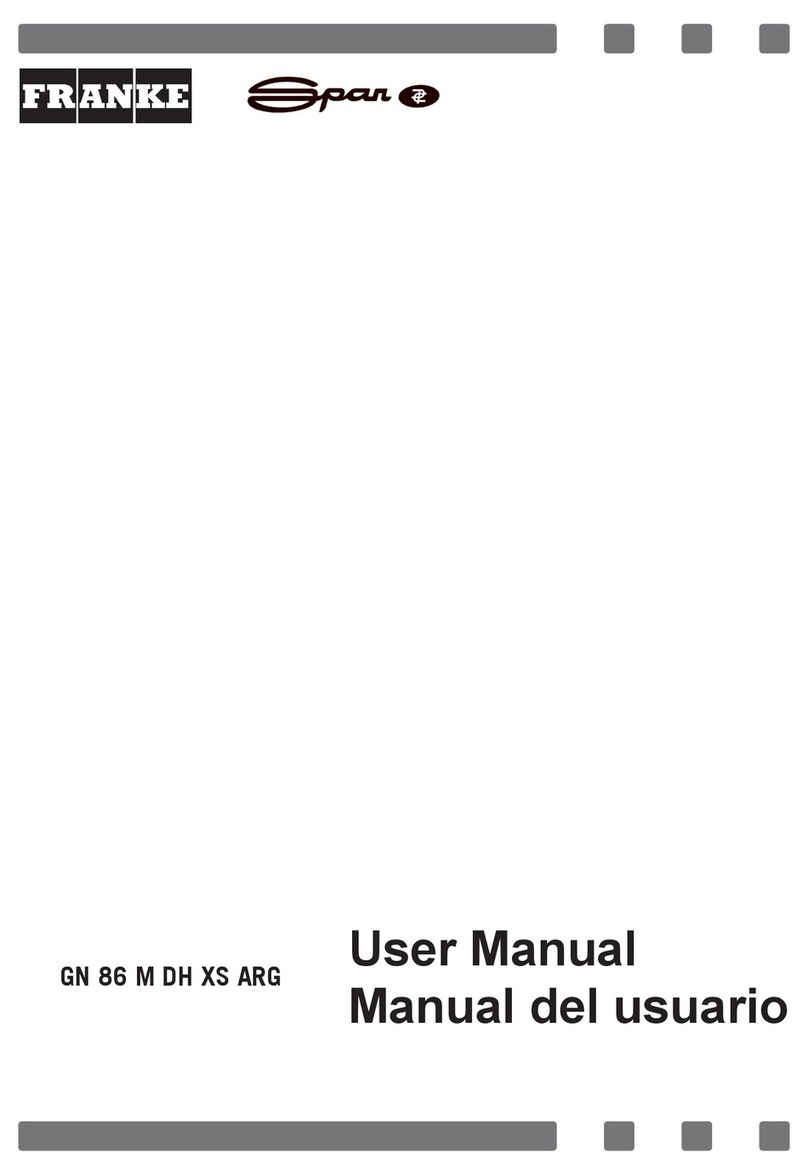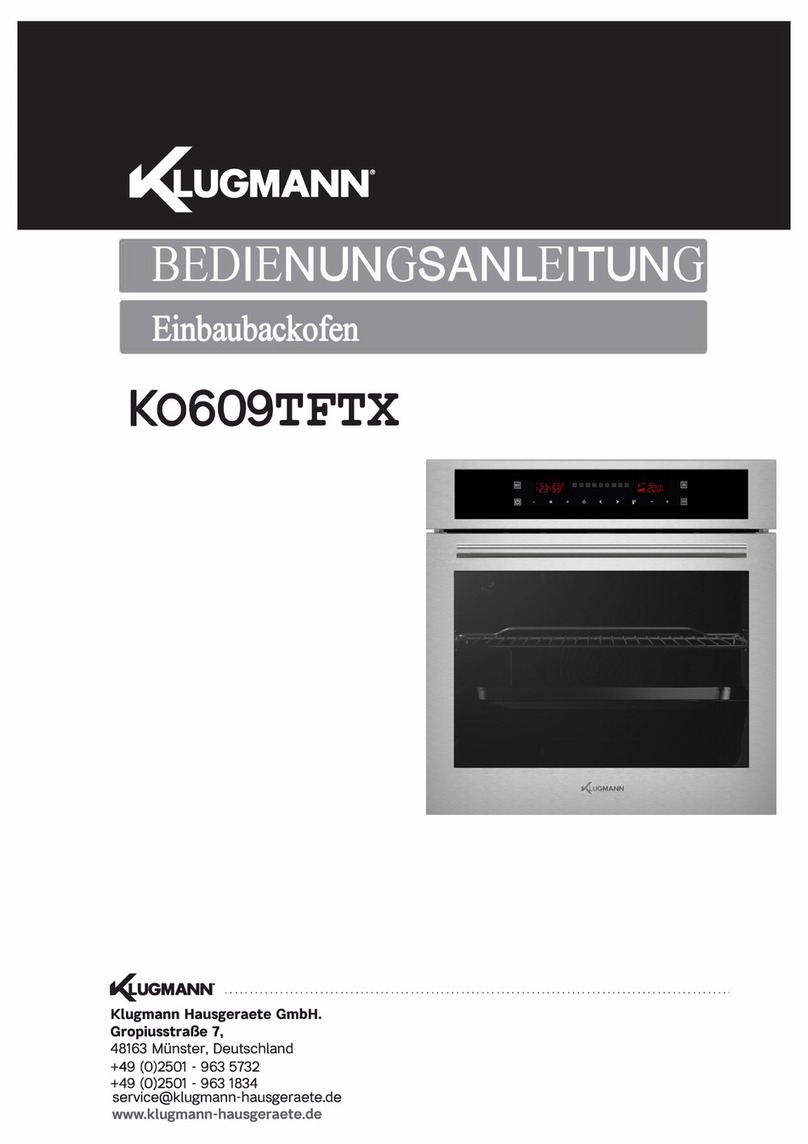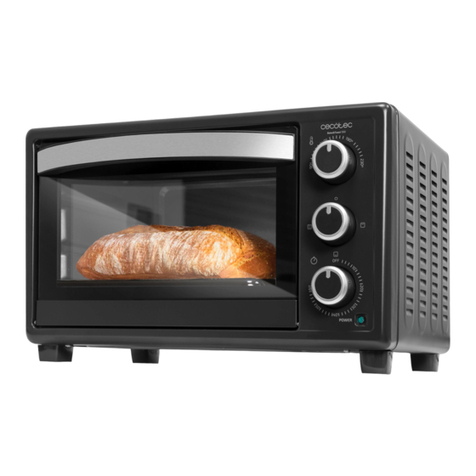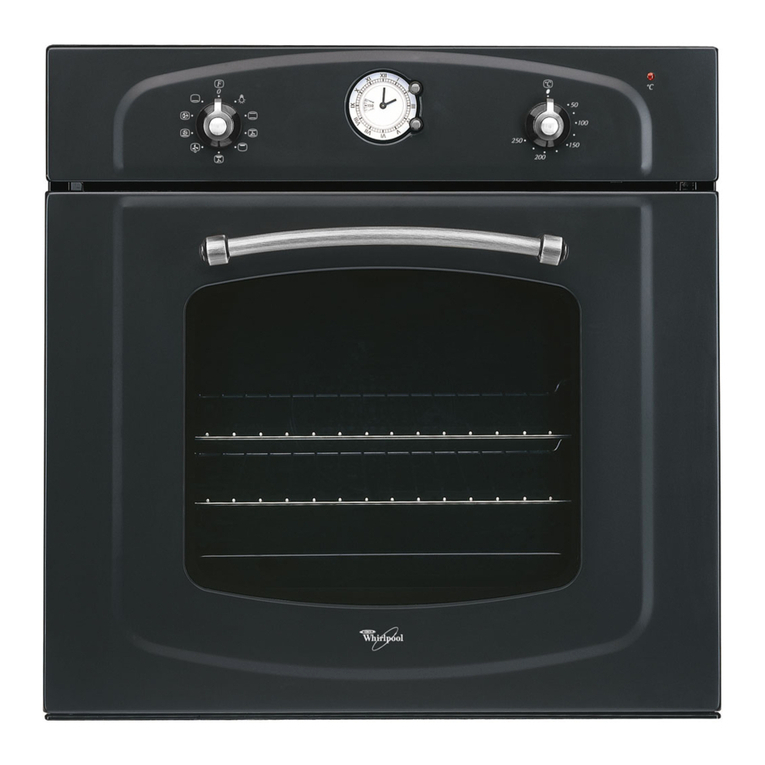Fontana Forni PIERO User manual

REV 1.0
1/6/20
USER MANUAL PIERO OVEN
Pag. 1 | 62
USER MANUAL
USER MANUAL

REV 1.0
1/6/20
USER MANUAL PIERO OVEN
Pag. 2 | 62
PLEASE NOTE BELOW THE MODEL, SERIAL NUMBER AND DATE OF
PURCHASE FOR FUTURE REFERENCE:
model*: ………………………………………………………………………………….
serial number*: ………………………………………………………………...
purchase date: …………………………………………………………………..
*The identification plate is visible at the rear of the oven.

REV 1.0
1/6/20
USER MANUAL PIERO OVEN
Pag. 3 | 62
Dear customer
we want to thank you for choosing our products. This manual will
allow you to install and use your oven safely and in the best possible
way. We recommend that you read the following manual carefully
before turning it on for the first time. Should you have any doubts or
problems, please contact your dealer who will provide you with the
best assistance and support.
HOW TO TAKE CARE OF AND CONSULT THE MANUAL
•Take care of this manual because it is an integral part of the oven
you purchased, and therefore it should be kept for the entire life
of the product and for future reference.
•In case of loss or improper storage, you can request a copy from
the dealer or the manufacturer specifying the oven model.
•Important information or information which requires attention is
reported in bold
•The "notes" provide additional information
•! the warning symbol indicates that you should read and
understand the message referred to because failure to do so
may compromise the functionality of the oven or cause damage
or injury to the user.
SAFETY
•Appliance for external use only (outdoors).

REV 1.0
1/6/20
USER MANUAL PIERO OVEN
Pag. 4 | 62
Use is prohibited in closed areas, campers or boats.
•If, when not in use, it is stored indoors or in closed rooms, it is
compulsory to disconnect the gas cylinder, which must be stored
outdoors and safely in accordance with local regulations.
•When used, the appliance must be supervised and never left on
without the presence of an operator.
•Special care must be taken to ensure that children or people
with cognitive impairments stay away from the appliance, even
when not in use, in order to avoid accidents or serious injuries.
•Also be careful of any pets that might interfere or cause damage
during operation.
•Parts of the oven may become very hot during and immediately
after use - use suitable gloves and protection.
•Do not move the oven when in use, wait until the internal
temperature is below 40/45°C before moving it or putting it back
indoors (Only after disconnecting the gas cylinder).
•Metal parts may be sharp, use suitable gloves when lifting or
handling this product.
•This appliance must not be used as a heating source or for any
other purpose other than for its intended use.
•Appliance is for domestic use and it is not intended for
commercial and/or professional use.
INSTALLATION
•The appliance must be positioned at least 5 cm away from non-
combustible surfaces and at least 50 cm from each side and from

REV 1.0
1/6/20
USER MANUAL PIERO OVEN
Pag. 5 | 62
the rear. If the legs are not installed, the unit should only be
placed on a non-combustible surface.
•Do not place it under a cover or shelter that might be flammable.
•DO NOT restrict the airflow to the unit.
•Keep the area around the equipment free of combustible
materials, petrol and all flammable liquids and vapours.
•Your new oven is factory configured for use with LPG gas.
•The burner has been adjusted at the factory and it will not be
necessary to make any changes to the setting for proper use.
PRECAUTIONS FOR GAS CYLINDER! !
•We recommend using cylinders weighing no more than 10 Kg if
stored in the oven trolley.
•Maximum length of the gas pipe allowed is 1.5mt
•Always handle the gas cylinder with care. Never put it back in a
horizontal position as the valve could get damaged. This could
cause serious safety problems. Always use the cylinder in an
APPLIANCE
non-combustible surfaces
from combustible surfaces
5 cm
50 cm
5 cm
50 cm

REV 1.0
1/6/20
USER MANUAL PIERO OVEN
Pag. 6 | 62
upright position. If positioned horizontally, the cylinder may
allow the combustible liquid to reach the pipes, causing damage
and the risk of explosion.
•Always place the cylinder in an accessible location to facilitate
turning it on and off in case of emergency.
•Never subject cylinders to heat. The internal pressure could
increase and exceed its safety limits.
•Never store Butane or Propane gas cylinders (even if empty) in
the house, basement or cellar. Propane gas is heavier than air, if
there is a leak the gas will accumulate at the lowest level and
become dangerous if there is a spark or flame.
•Never store spare cylinders of Butane or Propane gas near the
appliance in use - "danger of fire/explosion".
STORAGE AND CONSERVATION
When storing the appliance due to long periods of inactivity, remove
the cylinder and cover the appliance in a way that ensures good
ventilation so as to reduce the formation of condensation.
Store the cylinder outdoors in a well-ventilated area.
ASSISTANCE
This gas appliance must not be altered or manipulated.
Any repairs or servicing must be carried out by a qualified technician.
Regular maintenance is recommended. See maintenance instructions.
! PRESSURE REGULATOR

REV 1.0
1/6/20
USER MANUAL PIERO OVEN
Pag. 7 | 62
This device must be equipped with a pressure regulator in accordance
with local/national standards and/or regulations with a nominal
pressure output of:
CATEGORY I3+(28-30/37) Propane 37 mbar. Butane 28-30 mbar.
CATEGORY I3B/P(30) Propane/Butane 30 mbar
CATEGORY I3B/P(37) Propane/Butane 37 mbar
CATEGORY I3B/P(50) Propane/Butane 50 mbar
NEVER USE A GAS SOURCE WITHOUT PRESSURE REGULATOR.
Regular MAINTENANCE
When oven is cool or before each use, remove any food residues from
the hob due to previous preparations. Use a vacuum cleaner to clean
and empty the area around the burner to avoid malfunctions due to
ash or food residue. External parts should be cleaned regularly to
prevent oxidation, especially steel parts. Use specific cleaning products
for stainless steel. Even if the steel is of good quality, over time, and if
not treated regularly, it may present surface stains that in no way
compromise the safety and functionality of your oven. Oxidation may
occur in the presence of salt and/or moisture. After cleaning, and in
order to improve protection, apply a light layer of Vaseline oil. If not
used for a long time, shelter it in a dry and ventilated environment or

REV 1.0
1/6/20
USER MANUAL PIERO OVEN
Pag. 8 | 62
protect it with a suitable cover to ensure ventilation and to prevent
condensation.
Note: if there are long periods of non-use, clean the oven immediately
afterwards (as soon as it has cooled down) because deposits of fatty
residues and/or acidic food could affect and stain the steel parts,
making it difficult to clean them after a long time.
INSTALLATION AND FIRST IGNITION
Follow the precautions and recommendations listed in the
"installation" section to position the oven correctly and safely. In
models equipped with a trolley, after positioning it, ensure that the
oven is stable to avoid accidental movement during use. If possible,
place it on hard or compact surfaces so as not to alter the oven set-up
during use. In free-standing models, make sure that the support
surface is fireproof.
Technical data for gas connection
The inlet pipe of your utility should NOT be less than:
ؼ” = 8 mm for Propane
The recommended pressure for optimal operation is:
30 / 37 / 50 mbar for PROPANE

REV 1.0
1/6/20
USER MANUAL PIERO OVEN
Pag. 9 | 62
The maximum capacity of the appliance is around a8000 Kcal/h
which is equivalent to about 10 kW/h
30Mbar pressure and PROPANE gas
max. hourly consumption
PROPANE 1.0 Kg/h

REV 1.0
1/6/20
USER MANUAL PIERO OVEN
Pag. 10 | 62
TYPE OF OVEN: FREE STANDING OR TROLLEY VERSION
Free standing models must always be placed on a fireproof surface
while trolley models can be transported and positioned according to
safety instructions and distances from flammable materials as seen in
the previous chapters.

REV 1.0
1/6/20
USER MANUAL PIERO OVEN
Pag. 11 | 62
In the free-standing version there are non-slip rubber feet at the base
of the oven that can be adjusted in height for optimal levelling and
good ventilation in the lower part of the oven itself. Removing these
feet and placing the entire base of the oven on the table could
compromise or limit the performance of the burner as well as
compromise operating safety and lead to excessive heat accumulation
in the lower part of the oven and inside the control panel.

REV 1.0
1/6/20
USER MANUAL PIERO OVEN
Pag. 12 | 62
If the oven is placed on a furniture unit, make sure that it is strong
enough to support its weight. Always leave one side open if the gas
cylinder is placed inside the furniture unit or ensure adequate air
intakes to prevent gas accumulation that could result in fire or
explosion. Adequate ventilation also prevents the gas cylinder from
overheating. In the event of a malfunction and/or outbreak of fire it
must be possible for the user to take prompt action to close the
cylinder valve and make it safe. Never store spare cylinders (even
empty ones) near the oven. They must be stored safely.

REV 1.0
1/6/20
USER MANUAL PIERO OVEN
Pag. 13 | 62
In the trolley versions, the lower support surface can also be used for
placing the cylinder. This ensures stability when the oven is moved and
repositioned in addition to ensuring the vertical position for proper
use. Suitable cylinders that can be inserted in the structure must be
small (camping type*). Cylinders of larger dimensions are not suitable,
both because of their size and because they are too close to the
bottom of the oven which may become very hot during use.
Conventional gas cylinders should be placed in the vicinity of the oven
and their stability must be ensured to avoid them tipping over.
N.B. Moving the oven is allowed only if it is cool and after closing the
cylinder valve if the cylinder is housed in the appropriate surface of
the trolley. If the cylinder is out of the trolley, it is advisable to close
the valve and disconnect it before moving the oven to avoid the
cylinder from overturning and/or being damaged, which could
compromise its use and functionality and cause fire and/or explosion.
*Check the dimensions because there are no standard sizes. There are
various sizes and for the same weight they may differ between
suppliers. Approximately the maximum cylinder height should be no
more than 400mm.
CYLINDER CONNECTION
The cylinder must have a pressure regulator (not supplied) suitable for
the type of gas used, while the oven is already equipped with the pipe

REV 1.0
1/6/20
USER MANUAL PIERO OVEN
Pag. 14 | 62
(~1.5mt) that must be connected to the pressure regulator. If it is
necessary to change the gas pipe because of safety reasons or due to
wear and tear, follow the instructions below.
Gently pull the knobs until they detach from the valve block.

REV 1.0
1/6/20
USER MANUAL PIERO OVEN
Pag. 15 | 62
Locate the 4 screws indicated in the arrows, 2 under the knobs and 2
under the shelf. Unscrew and save for reassembly.

REV 1.0
1/6/20
USER MANUAL PIERO OVEN
Pag. 16 | 62
At this point the cover is supported only by the side magnets. Pull
slightly to detach it. Pay attention to the capillary tube of the
thermometer that is inside the structure, make sure not to crush or
bend it.
In the box on the right you will find the pipe holder to connect the gas
pipe. Once the pipe has been replaced and tightened properly with a
strap, pass it through the opening under the dedicated oven surface
(see next page).
Reassemble everything taking care not to damage the capillary tube of
the thermometer.

REV 1.0
1/6/20
USER MANUAL PIERO OVEN
Pag. 17 | 62
Detail of lower passage for gas pipe
The cylinder must always be fitted with a pressure regulator*
calibrated for the type of gas used (G30_28/30mbar, G31_30/37mbar).
Avoid twisting, bending or crushing the pipe. If there are visible signs
of wear or the date of use stamped on the pipe has expired, replace it
immediately.
* pressure regulator is not supplied

REV 1.0
1/6/20
USER MANUAL PIERO OVEN
Pag. 18 | 62

REV 1.0
1/6/20
USER MANUAL PIERO OVEN
Pag. 19 | 62
Once the connections have been made, check the system for
leaks.
Before proceeding, you must make sure that you have tightened the
various fittings in case of maintenance or parts replacement. The check
should be carried out outdoors away from naked flames. Smoking is
forbidden. The points to be checked are the gas supply connection
points (cylinder connection, pipe holder connection and gas ramp). To
carry out the test safely, first prepare a solution consisting of one part
water and one part soap detergent, then open the valve on the
cylinder. Apply the soap solution on all indicated checkpoints. If you
notice the formation of small bubbles in the water/soap solution it
means there is a small leak. If a leak is detected, try tightening the
fitting and then repeat the test. Remember that every time the cylinder
is replaced, the sealing must also be replaced. If the problem is not
solved, do not use the oven.

REV 1.0
1/6/20
USER MANUAL PIERO OVEN
Pag. 20 | 62
DANGER OF FIRE OR EXPLOSION. As for the final part of the system
(between the ramp and the burner) this must be checked by a
technician (see next pages).
The entire circuit is factory tested and guaranteed against leakage,
while the connection to the cylinder is the responsibility of the end
customer.
EACH TIME THE CYLINDER IS REPLACED, CHANGE THE SEALING OF THE
CONNECTION ON THE PRESSURE REGULATOR.
PRE-ASSEMBLED CIRCUIT CHECK.
The functional parts of the gas circuit are pre-assembled in the factory
and guaranteed against leaks (individually tested). The whole system
consisting of ramp, taps, flex tubes and burner holder are contained
and protected inside a box located at the front of the oven. Any
unauthorized intervention or tampering will void the warranty and put
the product in a dangerous or malfunctioning condition that could
cause accidents, fires or gas leaks.
ANY INTERVENTION ON THIS PART MUST BE CARRIED OUT BY AN
AUTHORISED TECHNICIAN. To perform a thorough check, you must
have access to the lower part of the oven. The control points are the
connections between ramp, taps and flex tubes. Before proceeding,
the burners must be removed in order to access the injector located on
the burner holder (see below).
Table of contents
Other Fontana Forni Oven manuals

Fontana Forni
Fontana Forni PIZZA&CUCINA DOPPIO Operating instructions

Fontana Forni
Fontana Forni BELLAGIO Operating instructions

Fontana Forni
Fontana Forni FORNO ITALIA Series Setup guide

Fontana Forni
Fontana Forni GUSTO User manual

Fontana Forni
Fontana Forni MAESTRO 60 User manual
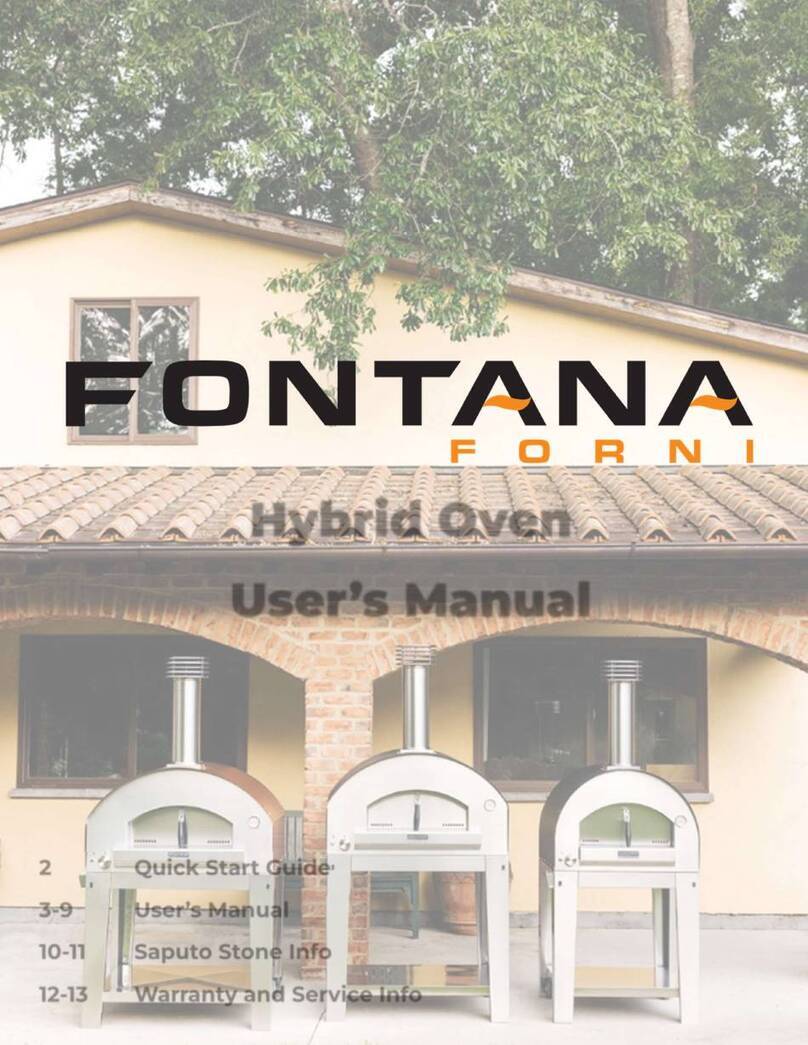
Fontana Forni
Fontana Forni 8070-1PRO User manual
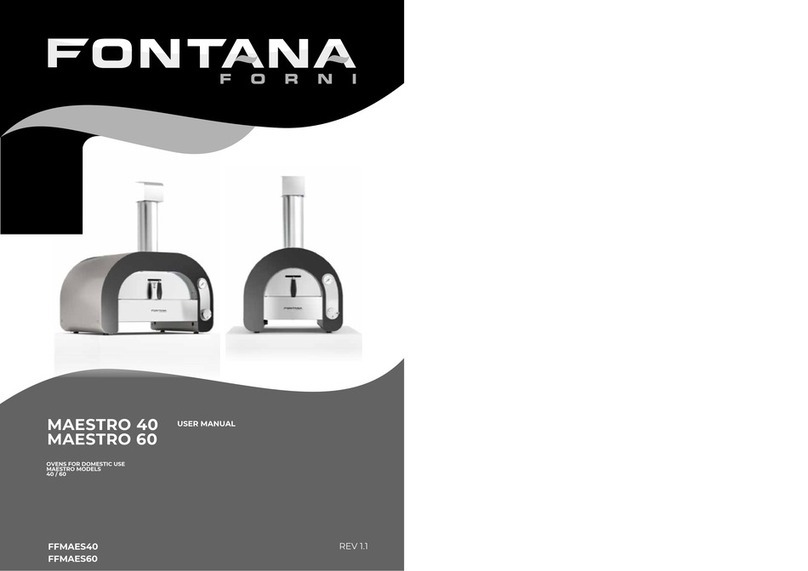
Fontana Forni
Fontana Forni MAESTRO 40 User manual

Fontana Forni
Fontana Forni MARGHERITA 60X60 User manual
